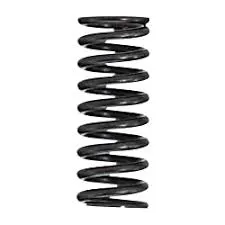
- Mobile Phone
- +8613931874955
- sales@cntcmetal.com
Properties and Applications of Cold Rolled Steel Bars in Construction and Manufacturing
Understanding Cold Rolled Steel Bars Properties, Manufacturing, and Applications
Cold rolled steel bars are a vital component in various industries, renowned for their exceptional strength, versatility, and surface finish. This article explores the manufacturing process, key properties, and diverse applications of cold rolled steel bars, shedding light on why they play a crucial role in modern engineering and construction.
What is Cold Rolled Steel?
Cold rolled steel is produced by rolling steel at room temperature. This process allows for more precise dimensions and a smoother surface finish compared to hot rolled steel. The cold rolling process involves feeding hot rolled steel (which is rolled at elevated temperatures and then cooled) through a series of rollers at ambient temperatures. This not only reduces the thickness of the bar but also increases its strength through strain hardening.
Manufacturing Process
The manufacturing process of cold rolled steel bars begins with the selection of high-quality hot rolled steel as the raw material. This steel is first cut into the desired length and then subjected to the cold rolling process. The steel is passed through rollers, which compress it to achieve the required diameter and surface finish.
During the rolling process, the steel bar is also subjected to various treatments to enhance its properties. For instance, annealing can be performed to relieve internal stresses and improve ductility, while pickling removes any oxides or scale formed during manufacturing. Finally, the bars may undergo additional processes like quenching, tempering, or coating to further enhance their properties depending on the specific application requirements.
Key Properties
Cold rolled steel bars boast several key properties that make them preferable for various applications
1. High Strength Cold rolling increases the yield strength of steel, making it suitable for applications requiring high tensile strength. 2. Tight Tolerance The cold rolling process allows for tighter dimensional tolerances, making these bars ideal for precision-engineered components.
cold rolled steel bar

4. Enhanced Flatness Cold rolling improves the flatness of the bars, which is essential for applications that require exact dimensions.
5. Versatility These bars can be easily machined and formed, increasing their applicability in various manufacturing processes.
Applications
Cold rolled steel bars are used across different industries due to their favorable properties. Some of the notable applications include
- Construction They are widely used in the construction industry for structural applications, reinforcing bars, and even as components in machinery and equipment. - Automotive Manufacturers utilize cold rolled steel bars in the production of parts such as axles, shafts, and beams due to their durability and precise dimensions.
- Manufacturing Many machinery parts, including hydraulic cylinders and shafts, benefit from the strength and precision of cold rolled steel bars.
- Furniture The furniture industry often employs cold rolled steel bars for creating bases and frames, thanks to their aesthetic appeal and strength.
- Rail and Transport In railways and transportation, these bars are crucial for various components, ensuring safety and functionality.
Conclusion
Cold rolled steel bars play an indispensable role in modern manufacturing and construction, attributed to their strength, precision, and versatility. Their unique properties make them ideal for a plethora of applications, from structural components to intricate machinery parts. As industries continue to evolve and demand higher performance materials, cold rolled steel bars will undoubtedly remain a fundamental choice for engineers and manufacturers alike. The ongoing advancements in steel technology and processing techniques promise to enhance their properties even further, ensuring that cold rolled steel continues to be a cornerstone of industrial innovation for years to come.
share:
-
Why Sacrificial Formwork Is Redefining Underground ConstructionNewsJun.06,2025
-
The Structural Dynamics of Modern Concrete: How Snake Spacers Revolutionize Flexible ReinforcementNewsJun.06,2025
-
Snake Spacers Smart-Lock Concrete Reinforcement with Surgical PrecisionNewsJun.06,2025
-
Snake Spacers: Reinforcement Precision for Modern Concrete ProjectsNewsJun.06,2025
-
Snake Spacers Powering Concrete's Structural DNANewsJun.06,2025
-
Slither into Success: Snake Spacers' Precision Bite for Unbreakable ReinforcementNewsJun.06,2025
-
Sacrificial Formwork: Building Stronger, Faster, and Safer StructuresNewsJun.06,2025



















